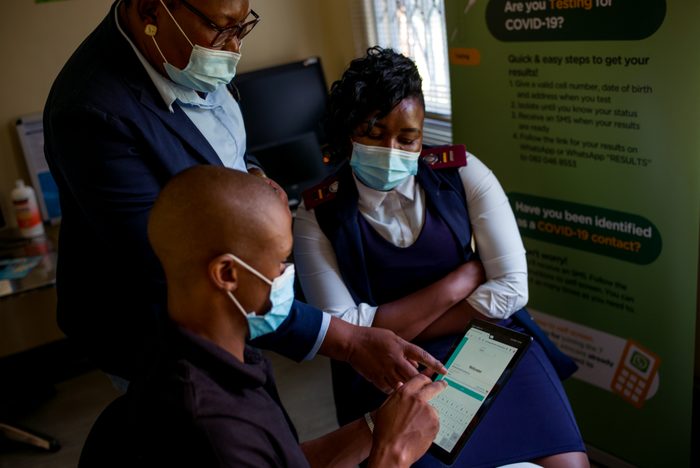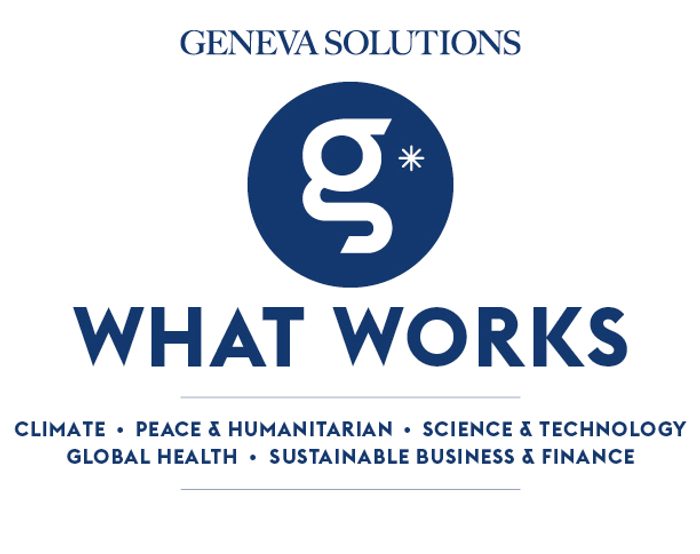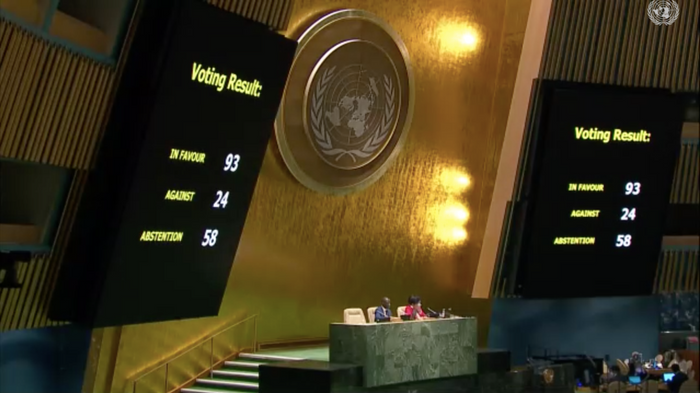Good morning, this is Irene. Today we are covering digital solutions that can provide people with healthcare who would otherwise not get it. Plus, a new initiative that wants to change how we think about data is coming to Geneva.
Meanwhile, the UN General Assembly has stripped Russia of its seat on the Human Rights Council in a 93 to 24 vote with 58 abstentions. Also on our radar is a massacre that killed hundreds of civilians in Moura, Mali in late March, linked to the civil war that has ravaged the country since 2012. |
|
⚕️📱 Geneva hubs seeking to bridge digital and health divides
|
|

Head of Data Capture Tshidiso Keemme, Data Analyst Dihlare Mthimkulu and Nurse Puteletso Lekotjolo view the Go.Data system dashboard on a tablet at the Metsimaholo COVID-19 Call Centre in Sasolburg, South Africa. Go.Data is an outbreak investigation tool for field data collection during public health emergencies, managed by the Global Outbreak and Response Network (GOARN) and coordinated by WHO. (Credit: © WHO / Noor Images / Alixandra Fazzina)
|
|
New digital approaches to healthcare services are tackling inequities, data gaps, and silos between animal, human, and environmental health to reshape the future of healthcare and crisis preparedness.
Thursday, 7 March marked 74 years since the founding of the World Health Organization (WHO). Since 1948, efforts to strengthen health and medical preparedness across the globe have made leaps forward. But these efforts continue to contend with many of the same challenges: inequities, insufficient community engagement, damaging economic structures, data gaps, to name a few.
Climate change is amplifying some of these issues. Inequities are also deepening, as digitalisation of healthcare services thrive in some parts of the world and remain absent in others.
A new generation of digital tools and services are emerging to make healthcare more accessible, democratic, and conscious of the overlaps between animal, human, and environmental health.
Read more on Geneva Solutions.
|
|
Here’s what else is happening
|
|
The pandemic exposed the lack of accessible healthcare in many parts of the world. High-income countries have an average of 3.7 doctors for every 1,000 people, while the least developed countries have barely 0.3 doctors per 1,000, according to World Bank data. New digital health initiatives like I-DAIR, which we write about in our story above, aim to narrow that gap – including through open telehealth platforms that allow people with similar medical needs to meet with specialists at the same time.
|
|
|
GS news is a new media project covering the world of international cooperation and development. Don’t hesitate to forward our newsletter!
Have a good day!
|

|
|
Avenue du Bouchet 2
1209 Genève
Suisse
|
|
|
|










